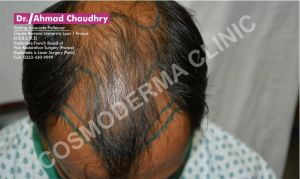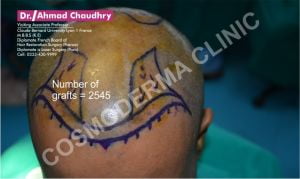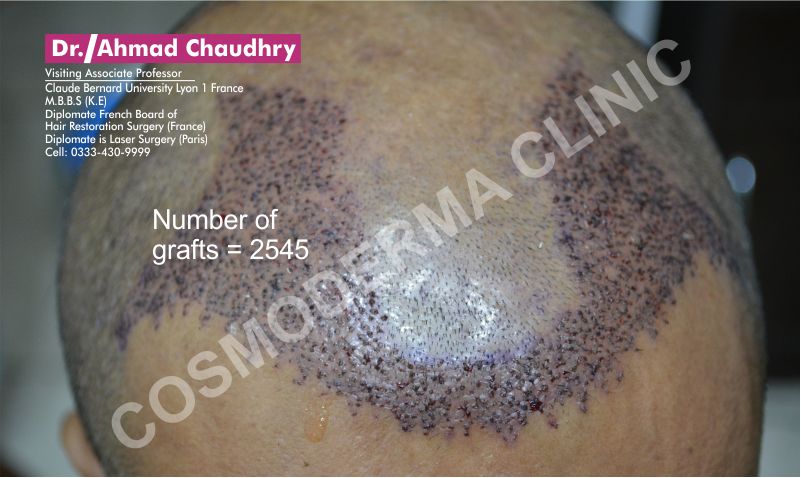FUE or follicular Unit Extraction is one of the two methods of hair transplant which was first used by a Japanese dermatologist in 1988. This technique was included in 2002 after publication of a research conducted by two American hair restoration surgeons. There are only few surgeons present all around the world which have years of practice and developed high skills in FUE. This is because a lot of time is needed to study and learn this technique. Only a highly skilled surgeon can insert up to fifteen hundred grafts per day by using this technique. This is considered a painless surgery with minimum scarring on scalp. Dr. Ahmad Chaudhry is an expert in Fue hair transplant technique in Pakistan and performing mega sessions of three thousand to five thousand follicles in single session.
In this method, follicular units are removed from the donor site of scalp where dense hairs are present. Before removing, donor site of scalp is given a local anesthesia. These follicular units are removed one at each time by surgeon. In this step, medical equipment usually a punch is used in making small tiny cuts on donor area to separate them from nearby tissues. After that, they are pulled out directly from the scalp. Surgeon will repeat this process over and over again until he gets the required amount of follicles. This whole method can take many hours and multiple sessions. Wounds are left on scalp of approximately one millimeter that takes seven to ten days to heal properly. When this healing takes place, small white marks are still left in donor area of the scalp. These are thousand in numbers, but are not visible to eye. Surgeon needs to create recipient sites in area suffering from baldness . He uses small hollow needle to make these tiny sites. He transplants the harvested follicular units into each site. Hair starts growing from these follicles after three to four months of surgery. Specially designed robotic instruments are used to perform this surgery.
FUE technique is almost as same as FUT, but they have a major difference. In FUT, a strip of follicles is used to remove follicles from the scalp. This saves time of both patients and surgeon. This method is painful and surgeon is required to give proper amount of local anesthesia to patient. After the surgery, wound is stapled or stitched by surgeon. Recovery time is also more as compared to follicular unit extraction. When it comes to cost, FUE is more expensive than FUT. For Example, if a single FUT graft costs 40 Rupee, a single FUE graft will cost eight 60 to 80 Pak Rupee. There is more chance of follicular damage in FUE than FUT. This technique is ideal for those people who are on initial stages of hair loss. It is also safe for those who want hair restoration on their eyebrows and eyelashes. Your doctor can recommend you best regarding method of transplantation you needed. No cutting, bleeding, pain, big scars and discomfort is involved in this technique. You can perform your routine activities after a few hours of treatment.
Frequently Asked Questions
Who is the pioneer of this technique in Pakistan?
Dr. Ahmad Chaudhry is the pioneer in Pakistan for this technique. It is the only clinic where patients are not forced for strip or FUT technique.
Who has introduced micro FUE technique in Pakistan?
Dr. Ahmad Chaudhry has introduced micro Follicular unit extraction technique in Pakistan.
Who can get benefit from this procedure in Pakistan?
Both male and female can benefit from this technique.
What is the cost range in Pakistan?
The cost depends upon number of grafts. To give you an idea price for FUE technique is 45000 to 75000 for small session consisting less than 1000 grafts.
Where can i get best hair restoration in Pakistan via FUE?
You can get at our clinic and get an appointment by calling or through WhatsApp +92-333-430-9999




